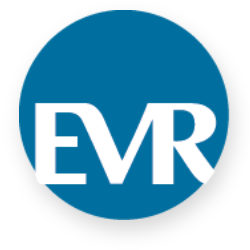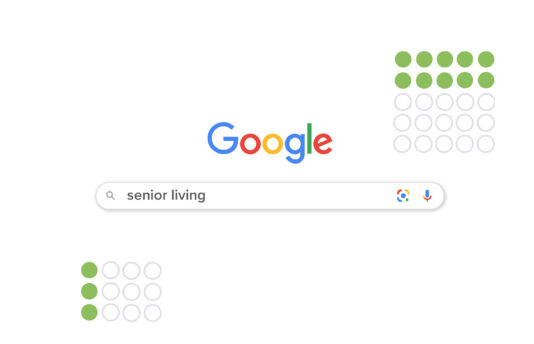Note to healthcare marketers: Please feel free to pass along this analysis of the recruitment process to your HR peers.
Healthcare recruitment is more competitive than ever. With a rising demand for skilled professionals and an aging workforce, traditional hiring methods aren’t cutting it. Organizations must innovate to attract top talent. This guide dives into fresh, bold recruitment strategies that will help your team stand out and secure the best candidates. From personalized approaches to leveraging new channels, it’s time to rethink how you hire.
The Old Ways Don’t Work
Attracting top healthcare talent is more challenging than ever. Traditional methods like posting job openings on job boards and waiting for applicants no longer cut it. Simply advertising vacancies is a passive strategy in a competitive job market.
Increasing wages and benefits might offer short-term relief but won’t solve the issue long-term. Many facilities have turned to costly, temporary solutions like travel nurses, but this model is unsustainable. Travel nurses, paid between $5,000 and $10,000 per week, add to the financial strain without addressing the root cause of staff shortages.
In today’s employee-driven market, candidates are highly selective. So why should they choose your facility? To stand out, healthcare employers need to adopt a proactive, innovative approach—building their brand, improving outreach, fostering employee referrals and engaging talent directly.
Despite efforts to raise wages and offer sign-on bonuses, vacancies persist. Traditional recruitment methods alone are no longer enough. Healthcare organizations must embrace new strategies to attract qualified candidates.
The healthcare job market is highly competitive, with registered nurses in high demand and able to choose where they work. To stand out, it’s essential to rethink your recruitment strategy and enlist the help of healthcare marketing expertise.
Move beyond job boards—only about 50% of applicants come from these sites, and many are unqualified. Additionally, applicant tracking systems like Workable or Jobvite can cause qualified candidates to slip through the cracks. The time to innovate is now.
Personalization is Everything
In today’s hyper-competitive job market, generic outreach is a wasted effort. Personalization isn’t just a nice touch—it’s the difference between getting lost in the noise and attracting the talent that drives your organization forward.
- It Cuts Through the Clutter: Generic job postings are ignored. Personalized messages are noticed. Candidates are bombarded with opportunities—make yours the one that speaks directly to them.
- It Builds Real Connections: Treating candidates like individuals, not a number in a system, creates trust and engagement. It shows you’ve taken the time to understand who they are, what they need and how they align with your mission.
- It Changes the Game: A personalized approach isn’t just about getting the name right. It’s about knowing what makes each candidate tick—their values, motivations and goals. When you speak to those, you’re not just filling a position, you’re building a long-term relationship.
In a market flooded with options, personalization is the only way to cut through the noise and secure the talent that will elevate your organization. It’s not optional—it’s essential.
Recruitment Channels
You won’t find qualified candidates in all the same old places, such as on job boards and social media. Instead, you will have to look at search engine optimization and paid advertising to break through the noise.
Social Media
In recent years, the ease of using social media has led recruiters to add Facebook, LinkedIn and other social platforms to the hiring mix.
While healthcare social media marketing is one good way to source applicants, on its own, it isn’t the only answer because there is often a disconnect between where employers think is the best place to reach candidates and where the candidates are.
For instance, 92 percent of employers use social media sites to find employees, yet only 57 percent of job seekers specifically look for jobs on those sites. The important thing is to understand who is on which social platform.
Potential applicants are spread over several platforms, so using only one social platform for your recruitment efforts won’t get optimal results.
What does this mean? As an example, if you need stateside candidates ages 35–54 to fill a $50,000-a-year job, you may have better luck with another social platform instead of, or in addition to, LinkedIn.
The Importance of SEO
SEO is often overlooked in recruitment because it works behind the scenes.
But SEO is tremendously important; it’s how people find what they’re looking for on the Internet. Search engines such as Google, Bing and Yahoo use bots (spiders or crawlers) to look at sites, scan pages and index the information.
Various signals or factors determine how the pages are indexed and where they should appear on search engine results pages (SERPs) to match a specific query. The search engine finds the most relevant results for a query using extremely complex algorithms.
That’s why keywords are important when crafting web and ad copy, blogs and other digital materials. Web pages and keywords (used naturally) tell the crawlers what the page is about so the search engine can properly index the information and serve it up in response to queries.
Long-tail niche keywords (specific phrases comprising several words) are extremely helpful for finding those hidden gems you seek. These keywords will bring in less traffic, but that traffic will be more precisely targeted and of higher quality.
Suppose you are looking for a nephrology nurse. If you used only the keyword “nurse” in your digital ads, you might get 10,000 clicks to your landing page. But they will come from people searching a range of nursing-related topics, such as LPN, hospice nurses, nurses for home care, nursing schools, definitions of nurse, news about nurses, nurse careers and nurse requirements, among many others.
But what if your ads had the keyword phrase “hospital jobs for nephrology nurses”? You may only get 100 clicks, but they would be almost entirely by people looking for information about hospital jobs for nephrology nurses. That saves you time and money on clicks.
And, when they get to the landing page, you’ll keep them there longer if the information is specific and addresses a job candidate’s concerns, such as pay, benefits and work/life balance, and reflects your organization’s unique culture. The longer they stay, the more likely they will take the next step, such as filling out a form.
Paid Search
Search advertising also uses keywords, but the results are via paid ads rather than organic means such as SEO. In addition to keywords, you can target users by interests, similarity to existing candidates and demographics. For example, in your research, you may have found that many physician candidates contribute to charitable causes. In that case, you could target a lifestyle & hobbies affinity audience that includes charitable donors and volunteers.
Or, if many of your nurses take yoga classes, you can target an affinity audience of yoga enthusiasts.
You can also target an in-market audience, for instance, people interested in health and medical jobs or nursing education. And you can target demographics such as people with advanced degrees in the healthcare industry.
The best part is that you can layer these targets to pinpoint very specific audiences. While you don’t want to target so narrowly that few or no candidates match your criteria, you can target narrowly enough to find candidates that traditional methods may not find. Not sure who exactly you should be targeting? A search engine marketing agency can help.
However, keep in mind most platforms restrict targeting by age or gender in recruitment ads to avoid discrimination, so some demographic targeting may be limited.
Unlike SEO, PPC results are gone as soon as you stop spending. But SEO can help achieve better results for paid ads, so it’s not an either/or proposition. You need both to be competitive.
Display Ads
There are several types of display ads, including standard banner ads, native ads, video ads, social media ads and in-app ads.
Targeting for Google Display ads is similar to that of search ads, but the options fall under either targeting by the website or targeting by the user.
With website-based targeting, you can choose specific placements on sites where your prospective candidates are likely to be based on their personas. Or you can choose topics so your ads are shown on websites relevant to the topics, such as healthcare. You can also exclude sites (and topics) where you don’t want your ads to run.
In addition, you can use keywords and target by interest, in-market, affinity and customer-match audiences and demographics, just as you do with search ads.
Display ads are more suited to awareness, as they are found on websites while people are browsing. In fact, some Google Display ads reach 94% of Internet users in the U.S.
What Makes You Special
Looking at job descriptions for some healthcare organizations, they read as if a robot wrote them. They are also often too long and overly verbose.
You are competing with several organizations for a smaller pool of applicants who can pretty much choose where they want to work. So why should they work for you instead of another healthcare facility?
Create a list of everything that makes your organization different from the others. Here are a few important differentiators:
- Advancement
- Recognition
- Reputation
- Fulfillment
- Employee satisfaction
- Retirement plans
- State-of-the-art facilities
- New technologies
- Paid time off
- Vacation time
- Work/life balance
- Diversity
- Flexible scheduling
- No mandatory overtime
- Workplace culture
- Pay
- Benefits
- Bonuses
Not only should some of these features be included in your recruitment materials, but you should also encourage your staff to share job posts and talk about their job satisfaction with others.
Word of mouth is very powerful, and your employees are among the most powerful weapons in your arsenal. What they say carries a lot of weight with their peers.
Make It Easier to Apply
Applying for a job shouldn’t require a lot of effort for prospective employees. To that end, employers need to reduce friction in the application process and do away with anything that will slow a candidate down or prevent them from applying.
Here are some areas of friction for candidates and how to avoid them:
Too Many Steps
Asking candidates to upload their résumés and then requiring them to fill out a job history manually wastes their time. Instead, remove unnecessary steps by only requiring applicants to do one or the other and keep questions to a minimum at the start.
Too Many Interviews
Another waste of candidates’ time is unnecessary multiple interviews. Multiple rounds of interviews contribute to candidate interview fatigue and cause candidates to drop out of the process.
Google’s “Rule of 4” was developed after research showed that having more than four interviews led to fatigue, yet the hiring decision remained the same whether there were four or ten interviews.
Applications Are Too Long
Requiring candidates to sign up for an account to apply for a job is a big barrier to completion, as is requiring candidates to complete a new application for each different job for which they apply.
Unnecessary complexity and friction may explain why many candidates never complete an application after clicking “apply.”
Conversion rates increase when an application takes less than five minutes to complete. Increase the odds of completion with short, easy-to-complete application forms.
No Salary or Benefit Information
You can show candidates the immediate benefit of applying by including salary and benefit information. Disclosing the information also prevents candidates from wasting time applying for jobs where the salary range is too low.
Healthcare recruitment is at a crossroads. There are more jobs than people to fill them and traditional recruiting methods may not prove as fruitful as they once were. By addressing your organization’s internal structure, you can differentiate your workplace and attract new hires.











